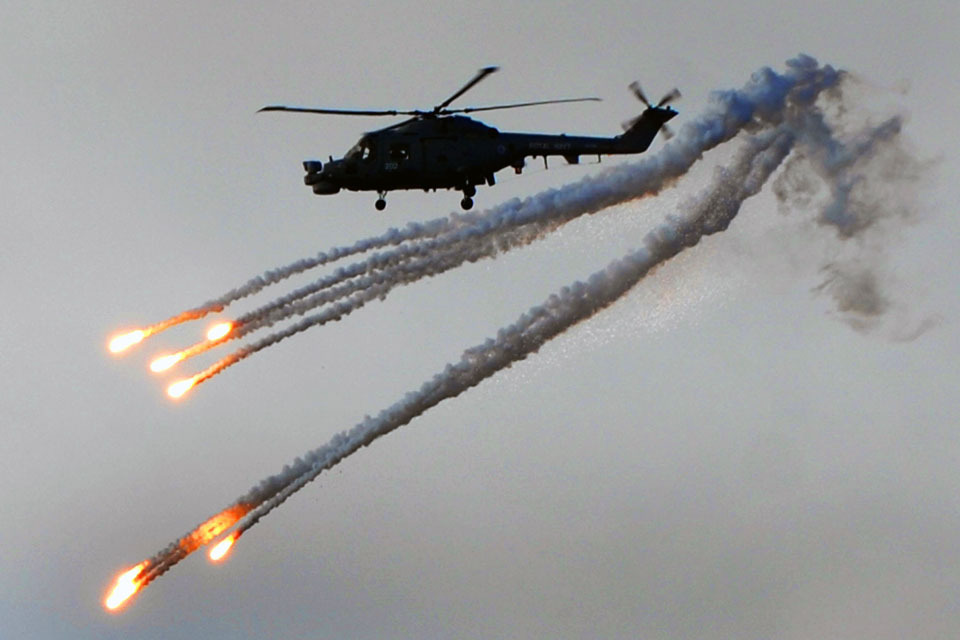Protecting helicopters against hostile fire
MOD is looking to industry for innovative ways to counter potential threats to UK military helicopters from ground-based weapons.

A Merlin helicopter deploys decoy flares (library image) [Picture: Leading Airman (Photographer) Maxine Davies, Crown copyright]
This will help to assess how aircraft manoeuvres, threat warning systems and countermeasures can reduce the effects of hostile fire from a range of weapon systems.
MOD scientists at the Defence Science and Technology Laboratory have been showcasing the technology they currently use for testing and evaluation. This includes the Helicopter Countermeasure Assessment System – a real-time engagement model built on a ‘Virtual Battle Space 2’ environment.
There are 2 main system components: a weapons station employing an imitation machine gun, and a cockpit flight simulator replicating basic helicopter controls. A trained pilot in the cockpit simulator can react to realistic warning cues to manoeuvre a virtual helicopter in response to a threat. Various manoeuvres can be trialled in both the lab environment and during field trials to determine the optimum response to any hostile fire event.

A Lynx helicopter deploys counter-heat-seeking-missile flares (library image) [Picture: Leading Airman (Photographer) Luis Holden, Crown copyright]
Currently, weapons operator performance during trials is assessed using military off-the-shelf equipment which can only be fitted to the Lynx Mk7. But, with the Lynx Mk7 out-of-service date being imminent, the assessment equipment will soon become obsolete, so there is a call to industry to consider ways to replace and upgrade the existing capability.
A combined simulation and live trials capability will allow aircrew to develop more effective tactics, techniques and procedures if facing an attack.
Squadron Leader James Birtwistle said:
The importance of simulation when testing new concepts is that it’s cheap, relative to live flying, easy to repeat, and you have full control of the environment in which your testing takes place.
Live flying is also important because the environment on a live aircraft is different from that in a lab. There are factors such as noise and vibration and there may well be others we might not know are an issue until we test something; which is why, to make sure something works properly, you have to do it on a real aircraft as well as in a lab.